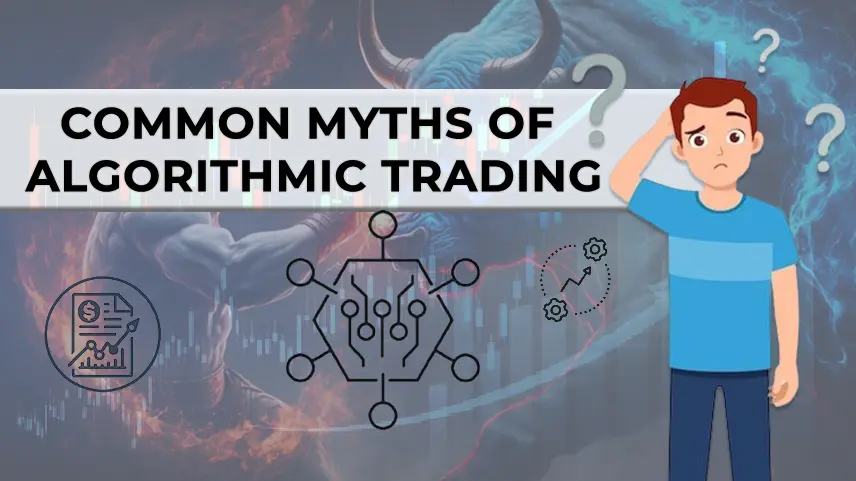
The interesting field of algorithmic trading, which combines technology and finance, has grown rapidly in the last several years. But as this complex trading method has spread, many myths and false beliefs have also gained traction. In this article, we aim to dispel some of the common myths associated with algorithmic trading.
One of the most prevalent misconceptions about algorithmic trading is the belief that it allows traders to simply set their strategies and forget about them, letting the algorithms work their magic. While it's true that algorithmic trading automates the execution of predefined strategies, it is far from a "set and forget" approach.
In reality, algorithmic trading requires ongoing monitoring and adjustments. Markets are dynamic and influenced by various factors, such as economic events, geopolitical developments, and even unexpected news. Algorithms need to be fine-tuned and adapted to changing market conditions to remain effective. Traders must actively manage their algorithms, periodically evaluating their performance and making necessary adjustments to ensure they align with their objectives.
High-frequency traders (HFTs) are often characterized as the villains in the world of algorithmic trading, blamed for causing losses to retail traders. This misconception stems from the belief that HFTs have an unfair advantage due to their lightning-fast execution speeds.
In reality, HFTs operate in a completely different league from retail traders. They invest substantial resources in cutting-edge technology and infrastructure, enabling them to execute thousands of trades per second. Retail traders, on the other hand, lack the resources and infrastructure to compete on this level. However, it's important to note that HFTs primarily profit from tiny price differentials and do not necessarily target retail traders directly. While their actions can influence the market, it's not the sole reason behind retail trader losses.
Algorithmic trading does involve complex strategies and technological elements, but the misconception that it's too technical for individual traders to grasp is far from the truth. With the availability of user-friendly algorithmic trading platforms, aspiring traders can access the world of algorithmic trading without an extensive technical background.
These platforms offer pre-built algorithms and tools that simplify the process. While a deep understanding of financial markets is undoubtedly an advantage, it's not a prerequisite for getting started with algorithmic trading. Traders can start by learning the basics, gradually gaining expertise, and even seeking the guidance of experts or online communities to navigate the intricacies.
Another common misconception is that algorithmic trading is reserved for institutional investors and large financial firms. While it's true that institutional investors have been early adopters of algorithmic trading, individual traders have also gained access to this powerful tool in recent years.
Many brokerage firms and online trading platforms offer algorithmic trading capabilities to individual traders, making it more accessible than ever before. Individual traders can develop their own algorithms or use pre-existing ones to execute their strategies. Moreover, they can allocate capital according to their risk tolerance and financial goals, proving that algorithmic trading is not exclusive to large institutions.
You can start your trading journey with Combiz Services at affordable prices without any technical or programming knowledge. They can develop algo trading software according to your needs and financial goals. Visit their official website for more details "www.copytrading.combiz.org".
There are various plans available depending on the number of accounts or licenses you are willing to operate. You can choose as per your choice.
Algorithmic trading is a powerful and accessible tool that has grown in popularity, yet it is shrouded in various myths. Dispelling these misconceptions is essential for a better understanding of the benefits and challenges associated with algorithmic trading. It is not a "set and forget" solution but requires active management, and HFTs are not solely responsible for retail trader losses. Algorithmic trading may be technical, but it's not beyond the reach of individual traders. With the right resources and knowledge, anyone can harness the potential of algorithmic trading to enhance their investment strategies and financial success.
Read Also: